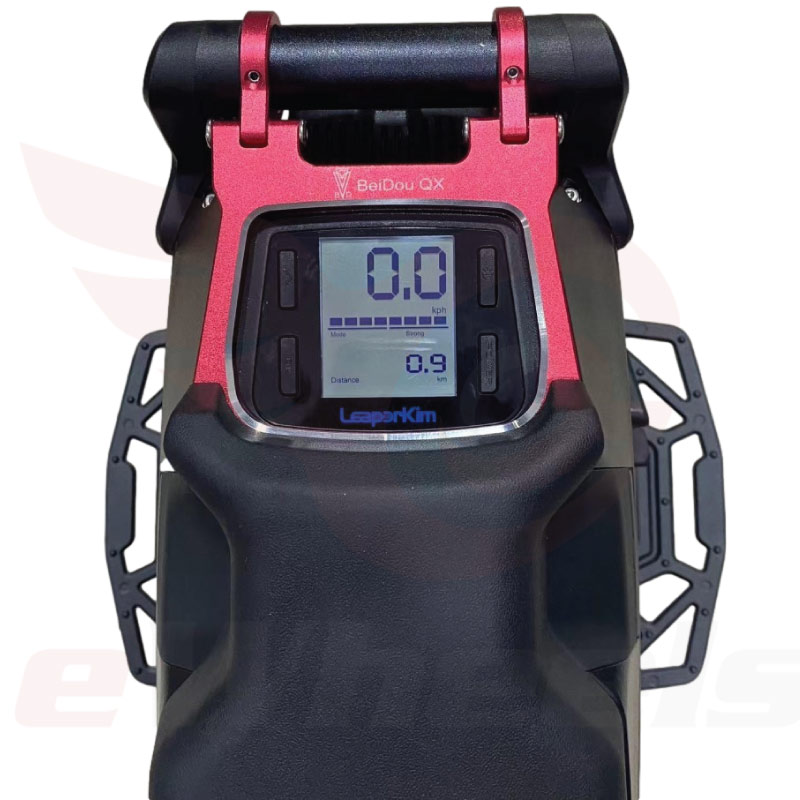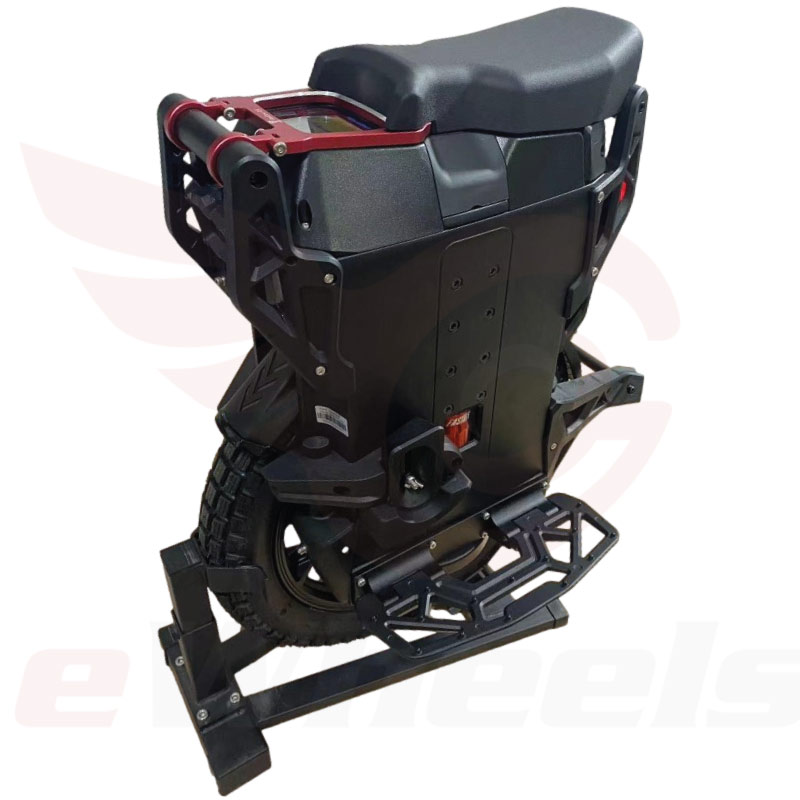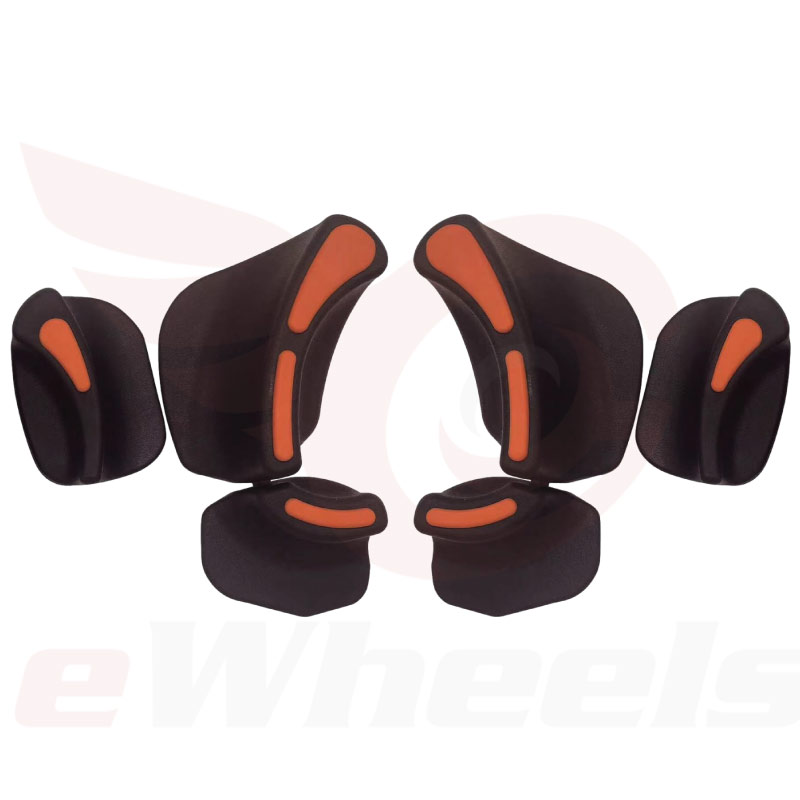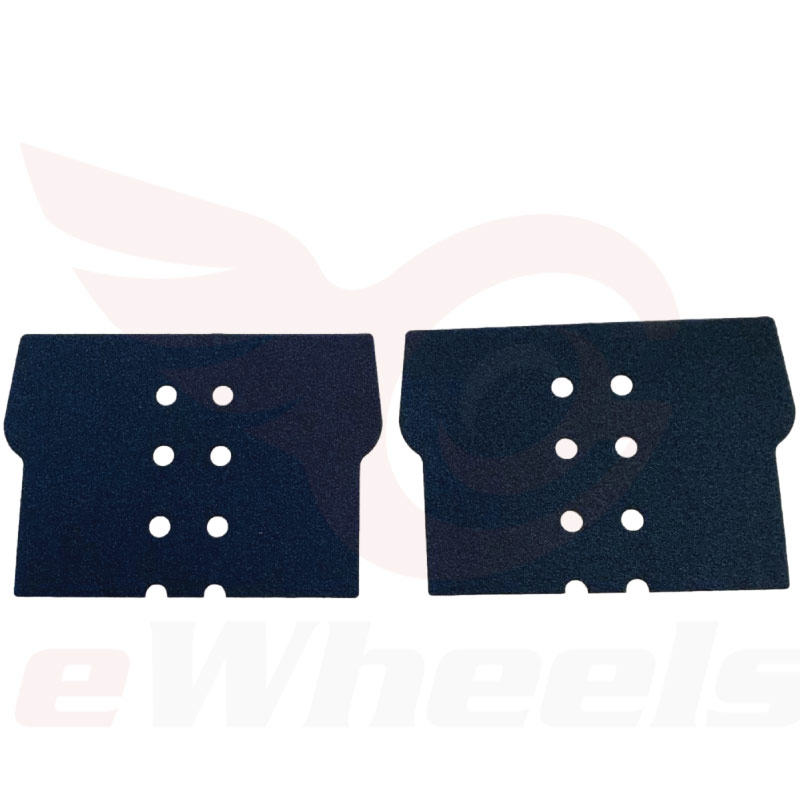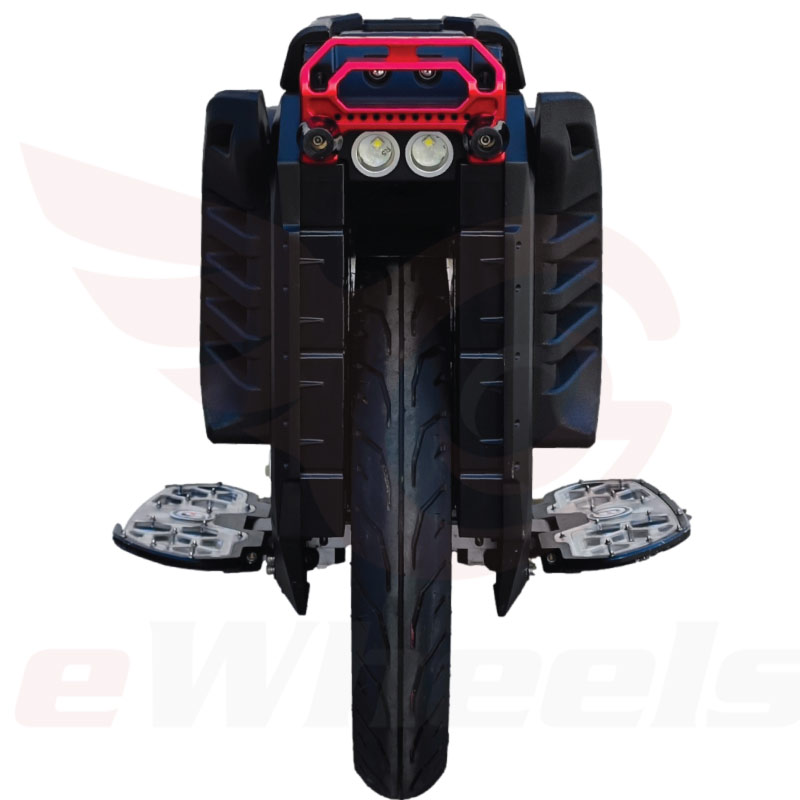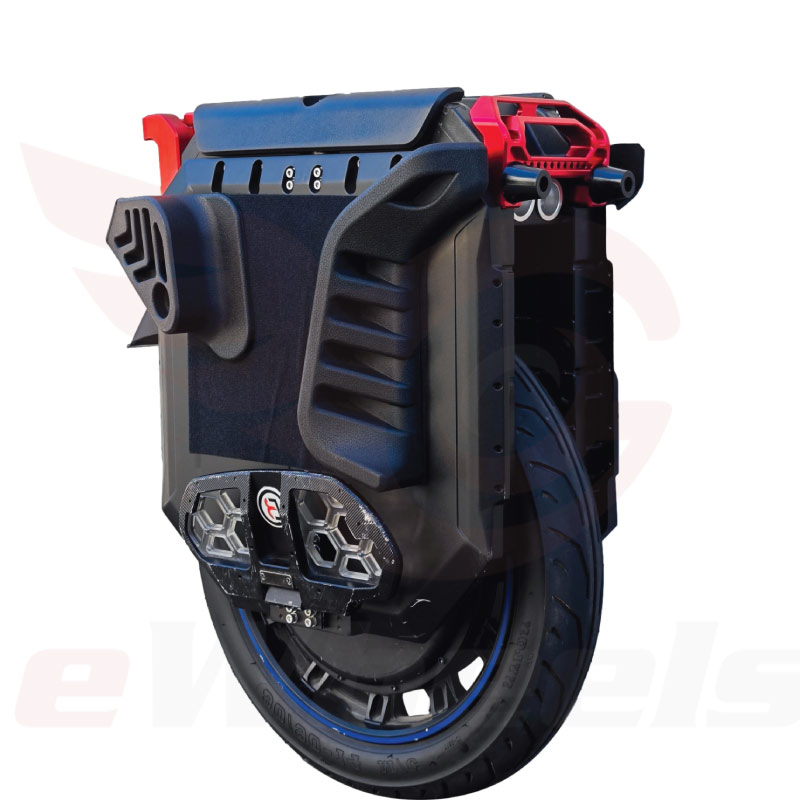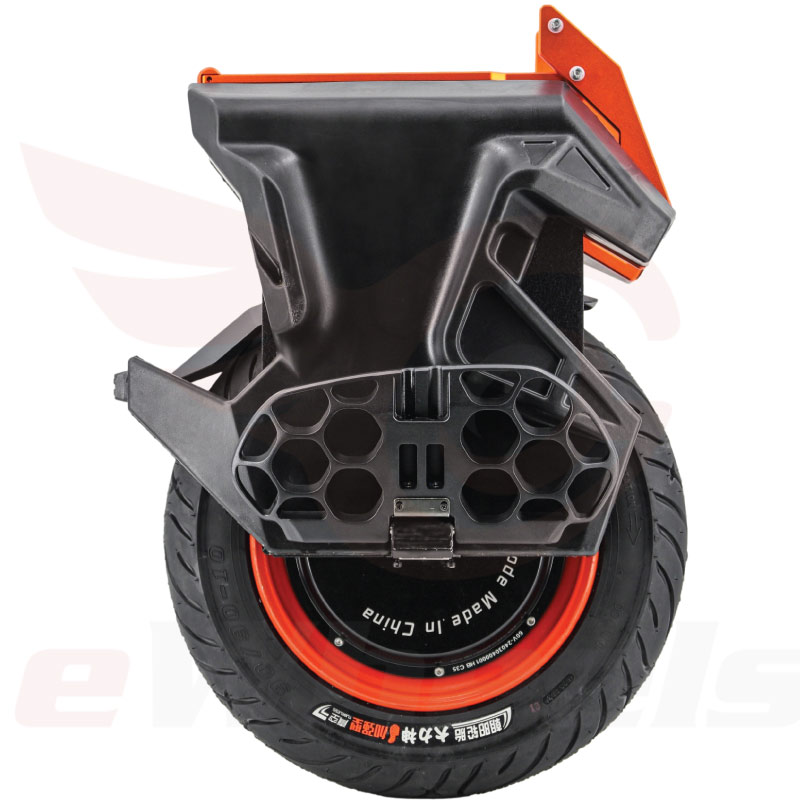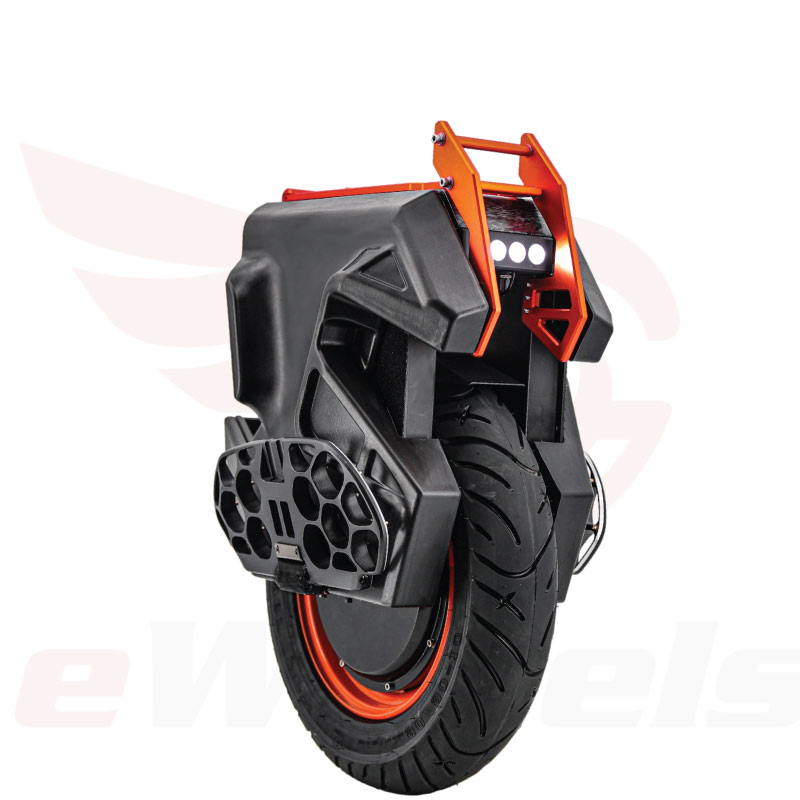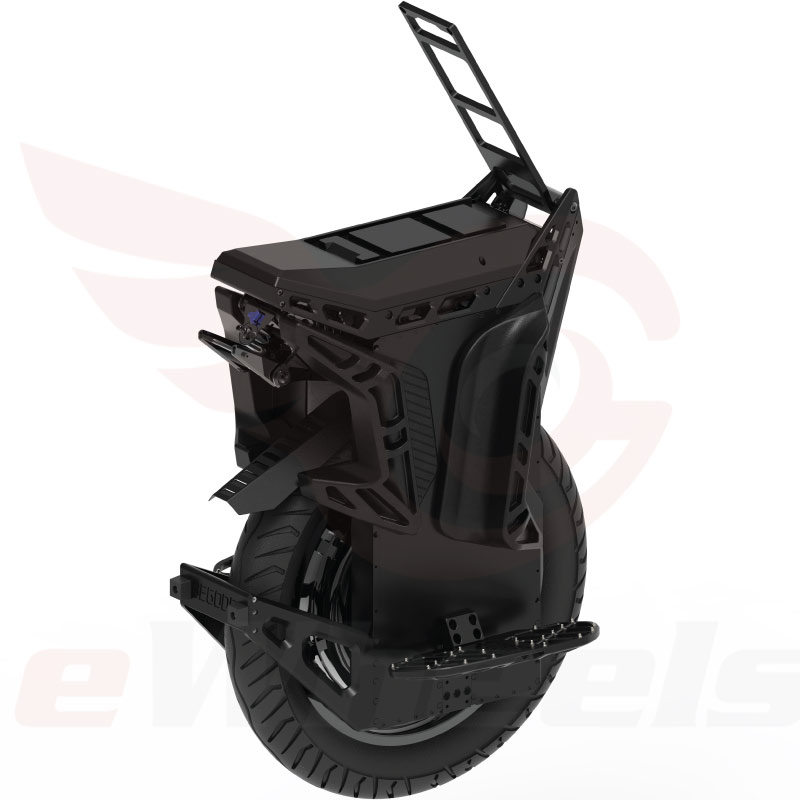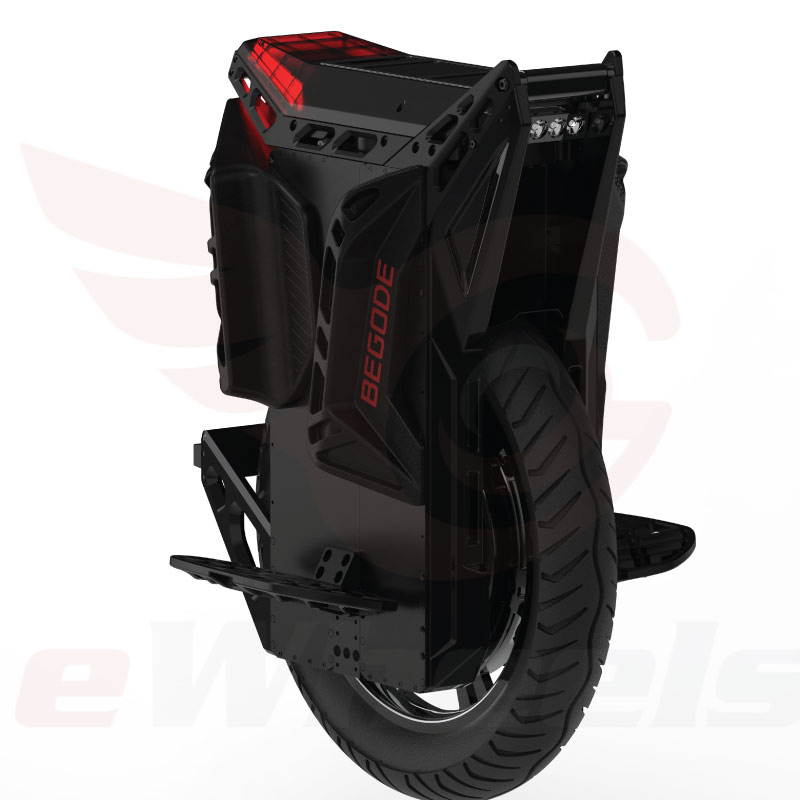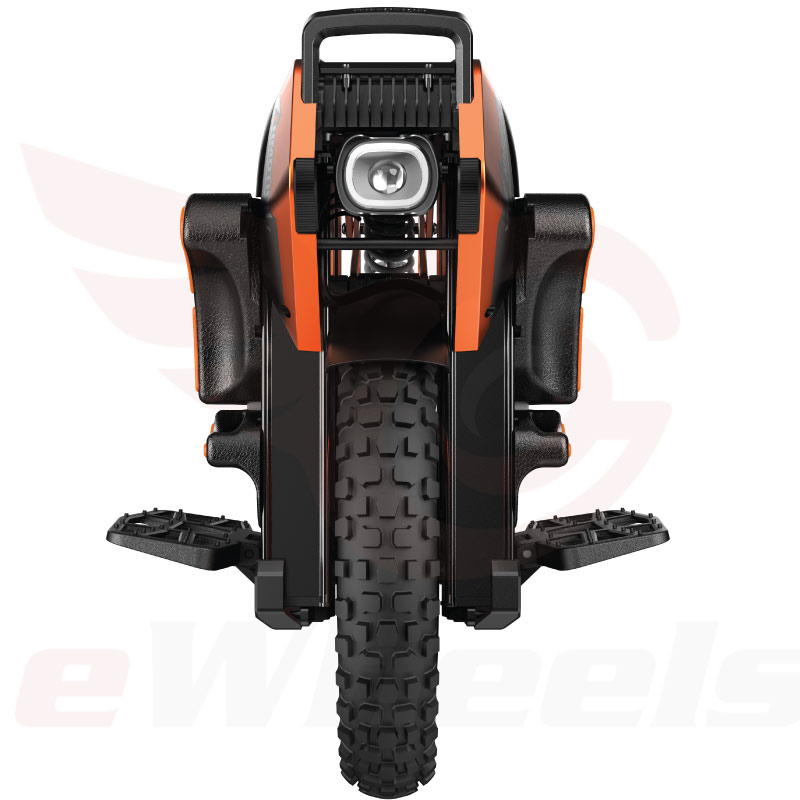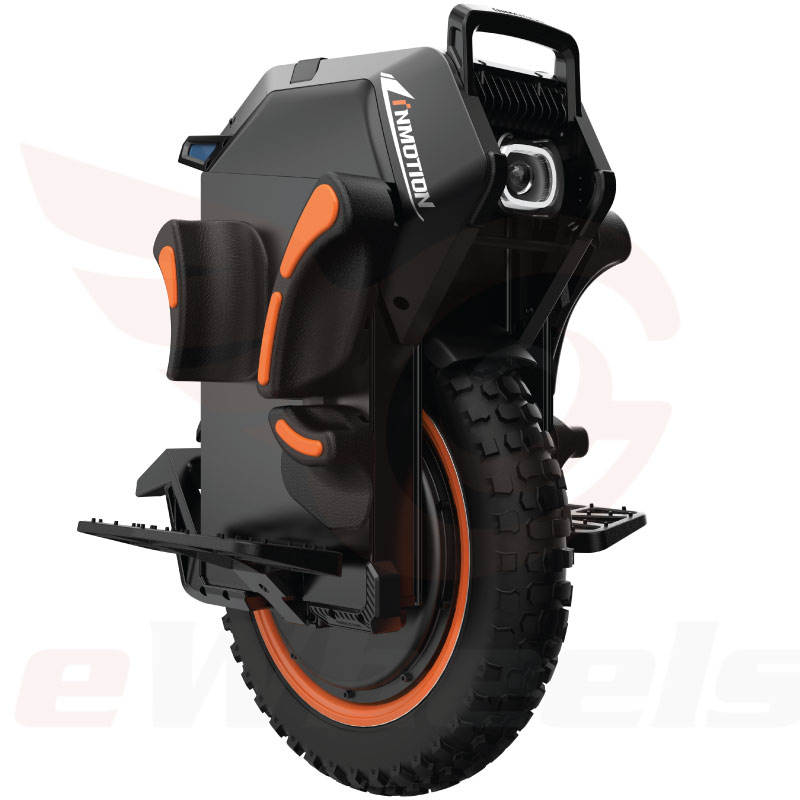- Most variants back in stock
- Bonus Extras: ALL Customers will receive a set of premium Powerpads & seat kit, a $250 value
- Motor: 3,200W (8KW peak) high-torque motor. With the first ‘no-load’ spin rate of 125KPH
- Weight: through the use of magnesium alloy, Veteran has been able to keep the weight at ~40kg/88lb, while increasing the size of the motor/tire & an additional 500Wh of battery capacity!
- Battery Pack: high-power Samsung 50S 2,700Wh/151V battery pack, with SmartBMS, capable of rapid-charging to 15A/2,250W
- Controller: first Wheel to use 36x 200V/140A MOFSETS, with a maximum current peak output of 840A
- Suspension: 90mm of functional travel, using the highly customizable Fastace suspension modules. Available in three different spring weights, 62/66/70lb
- Tire: Kenda K262 (knobby) and Longxin L841 tubeless street tire
Veteran Lynx, 2,700Wh Battery/3,200W Motor (8KW Peak)
$4,199
Description
 cruising speed
~55MPH
cruising speed
~55MPH
 weight
88lb
weight
88lb
 charge time
3hr to 80%
charge time
3hr to 80%
 max load
290lb
max load
290lb
 battery capacity
2,7000Wh
battery capacity
2,7000Wh
 Range
75 miles
Range
75 miles
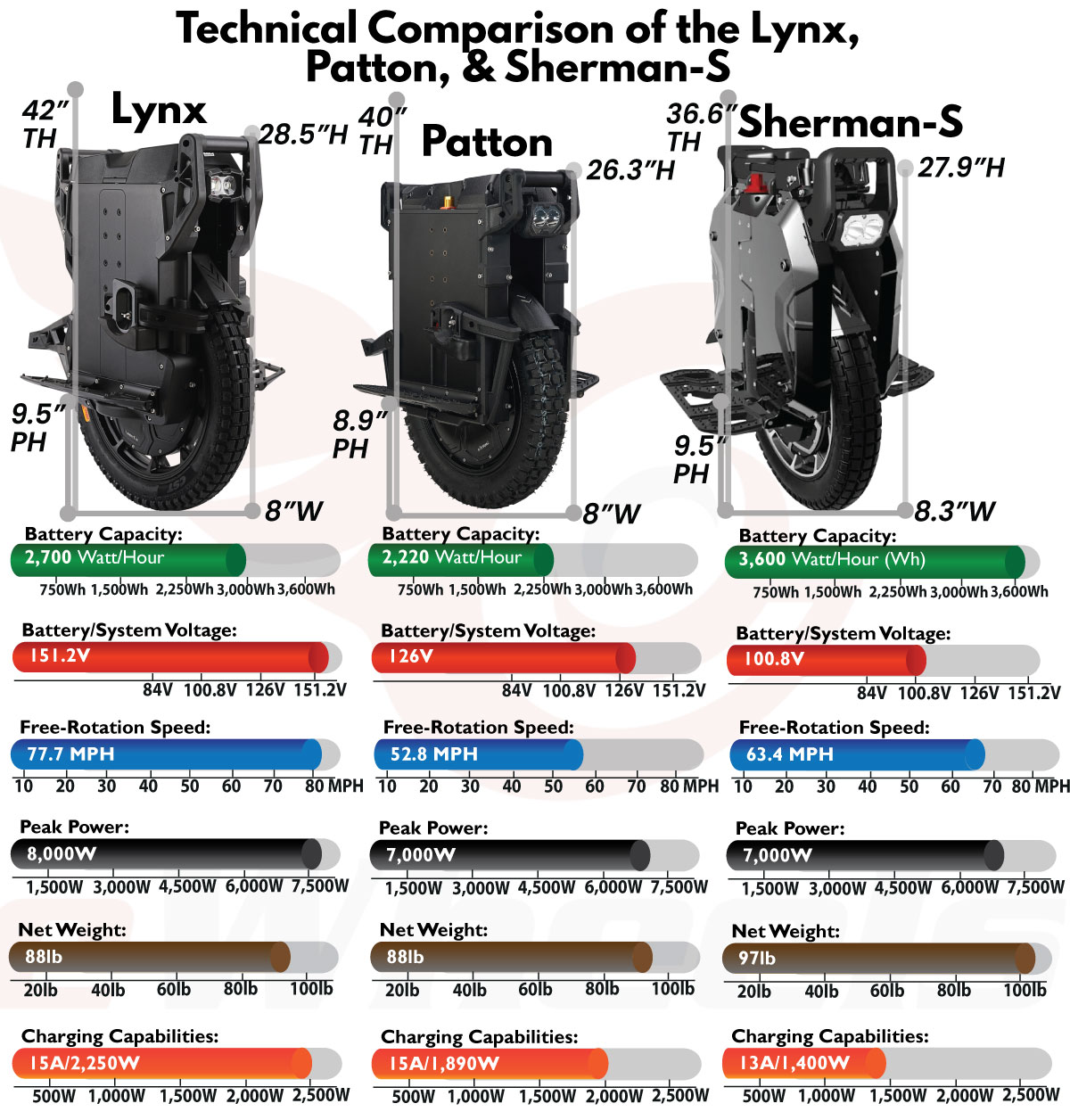
Lynx Overview
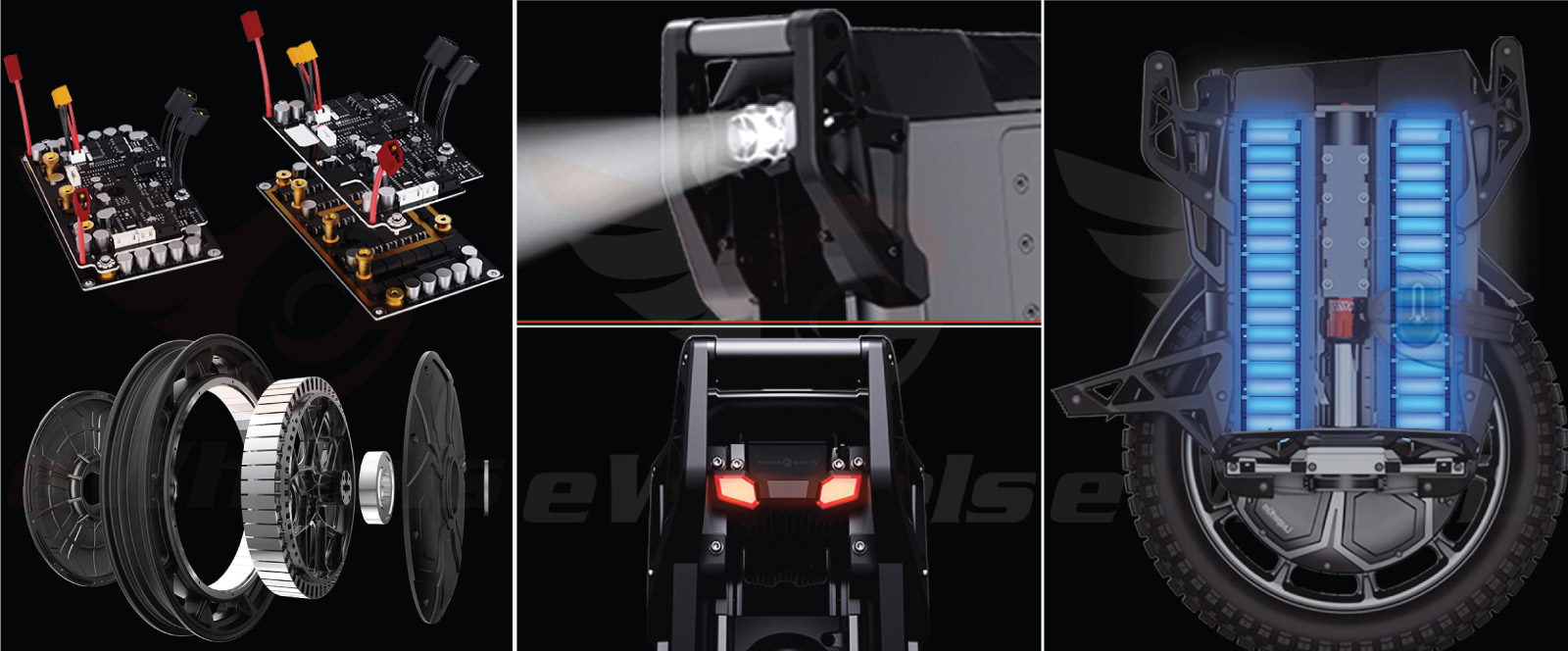
The Lynx is the first Electric Unicycle to break the >151.2V barrier. In principle, the advantages of using a higher voltage system are: higher potential efficiency, reduction in the gauge of wiring required, & greater rotational speed. To support this higher voltage, the Lynx required a new/uprated MOSFET (the electronic switches that power the motor), using 32x of the HYG100220NS1P chips, rated for up to 200V @ 140A peak current/each. The controller is designed for a theoretical maximum peak power rating of 840A @ 150V, for an astonishing 126KW! Clearly there are other bottlecks in the system, but at the MOSFET level, never before has this level of power been achieved.
Another first, for Veteran, is the introduction of their SmartBMS into the battery packs. This feature allows greater insights into the health of individual battery cells, such as cell voltage variance/drift, with half-a-dozen independent temperature probes across several cells & components on the BMS. A SmartBMS also provides allows for configuration of battery parameters for fine-tuning & optimization, with the need to make physical hardware changes & modifications.
Similar to the Patton, the Lynx is packaged with all the amenities of a modern Wheel: integrated trolley handle—that extends to 42″— built-in kickstand, adjustable 2500lm/20W headlight, large 10″ footplates, & front/rear handles for lifting the Wheel.
Frequently Asked Questions
- How does the Lynx fit into the current Veteran product line-up?
While the 2,700Wh battery pack of the Lynx might come as a slight disappointment for those seeking a higher performance iteration of the Sherman-S, the Lynx bridges the gap between the Patton & longer range Sherman-S, featuring a considerable boost in performance, torque, power & speed, along with a 17% increase in battery capacity—with the physical constraints of the metal casings, a 2,700Wh pack was largest size that could be accommodated in the design. It’s expected that the Lynx will have the highest acceleration & maximum speed potential of any Wheel produced to date. - When will the batch 2 shipment of the Lynx take place?
As of late December, the second round has completed production/QC, scheduled to arrive into LA around mid-January - With the release of the Lynx is the Patton still relevant?
Absolutely, the Patton’s 16×3″ tire makes the model more portable/nimble, the $1k price delta is quite substantial, & has good reliability track record. Our next production of the Patton will also be using the Samsung 50S high-power cells at the same $3,099 price. - How does one choose the appropriate shock resistance for a given weight & use case?
One of the unique new features of the Lynx is ‘progressive’ coil, with a higher density of turns at the top & bottom of the coil. This reduces the probability of ‘bottoming-out’ for a greater range of Rider weights. The initial reviewer feedback on the 62/66lb shocks is that they’re sufficient up to 220lb weight. - Does the Lynx use the same Suspension module as the Patton/Sherman-S?
Yes, they’re identical to the Sherman-S, but now with a 70lb shock coil option—the Patton’s shock is 10mm short than the SS/Lynx. - What type of battery cells are used in the battery packs?
We’re having our production of the Lynx equipped with the new high-power Samsung 50S cells. In addition to the benefits of higher rated discharge rates & faster charging, another benefit is a much larger range of both low & high-temperature operations. The Lynx is also the first Veteran model to incorporate a SmartBMS into the battery packs, for individual cell insights & monitoring.
- What stock charger is shipped with the Lynx & what other charger options will be available?
The stock charger is a 151V/5A charger with a rated output of 755W, additional stock chargers will available for $145. Also, we are working with Hou Ningning to for programmed Huawei R4850N with an output range of 80-170V on a 110V input circuit—note that power-supply circuit must be rated >13A for the higher >9A/151v DC output settings. - How is it possible to achieve the rated 15A of input charge current?
Through the use of 2x chargers across the 2x GX20-5P ports. The Lynx is packaged with a stock 5A/150V charger, which can be used with an additional 10A charge to yield an impressive 2,250W of power input, equivalent to nearly 1C! This current input should ONLY be used with the 50S packs!! - With the 151V Pack/System, is it possible to increase the speed even more?
While in principle it can, Veteran has achieved a ‘no-load’ spin rate of 168KPH/104.4MPH, they’ve reined in the controller to limit the max rotational speed 77.7MPH/125KPH, in an effort to reduce the risks the speed is electronically controlled. The kinetic energy & danger potential increases squared to the speed, without taking into account the human factors of reaction times! Using a Wheel at higher speeds greatly increases the risks of injury & fatalities. - Which other tires are compatible for the Lynx?
The initial Lynx samples are fitted with the CST-186, but for the first production, Customers will have a choice of either the Kenda 262 knobby, or the Longxin 841 street tubeless tire. Tires in this size are confusing, as bicycle tires are measured in diameter, while motor cycles are the rim diameter & width. Additionally a stamped diameter tire size can be out by 1-2″ when measured with a ruler. - The Specs have a maximum weight limit of 120kg/264lb, what are the areas that are susceptible to fatigue with increased load?
Historically, manufacturers use the ‘stamped’ tire load as the limiting factor. In practice, modern tires have a burst strength that is several multiples of the rated/recommended weight. In practice the Lynx ought to be able to support Riders around the 300-320lb range. - Has Leaperkim made improvements to the bearings/seals on the Lynx?
The improvements Leaperkim made to the Patton/Sherman-S, outer seals & ABEC rated 6208-2RZ bearings, are used on the Lynx as well.
The Lynx Has a Light Tread
On the Lynx, the Veteran engineering team took great pains to reduce the net weight by using lighter (but stronger) magnesium alloy materials on the critical areas of the battery cases, controller tray/base & motor. The effect of this work has been to yield 14″ motor (20″ tire) vs 12″ motor (18″ tire), with more power, & 21% more battery capacity at the same weight as the Patton at 88lb, this is the first time any manufacturer has been able to offer a significant specification upgrade, while simultaneously keeping the weight the same as an earlier model.
To illustrate where these weight saving measures have been achieved, the comparison photos below demonstrated the main areas of focus:
– Motor/Rim: despite the 2″ larger diameter & containing more copper in the stator, the Lynx 14″ motor assembly is just 0.7kg more than the 12″ Patton motor. If the same aluminum alloy was used on the Lynx rim, one would expect to see a motor weight of about ~13kg/28.6lb.
– Metal Battery Cases: here is where the maximum effect of the magnesium substitution is realized, without sacrificing the strength; on the Patton each battery case is a hefty 2.7kg/5.95lb, while on the Lynx the same component is just 1.82kg/4lb. As the Wheel contains a set of these, the net savings is nearly 4lb for a larger battery case!
– Controller Base/Tray: finally there’s the controller base, which also serves as the heatsink. The Patton has a hefty block of cast aluminum, weighing in at 1.25kg/2.75lb. The Lynx’s controller tray (a more complex shape/geometry) at almost half the weight at 0.7kg/1.54lb.
All combined, it came as a delightful surprise to see these various weight shedding measures yield a next generation Wheel, at the same weight as the Patton.
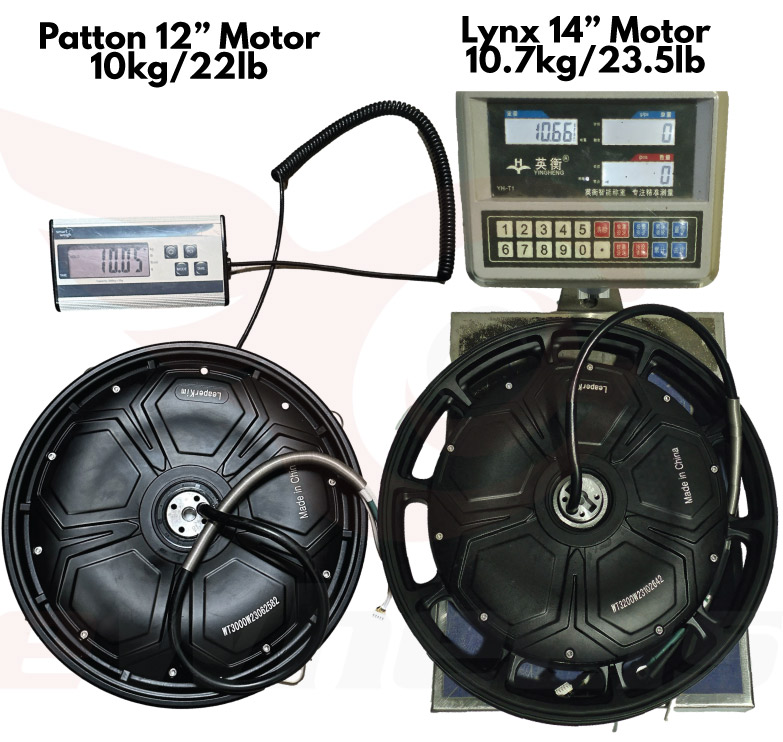
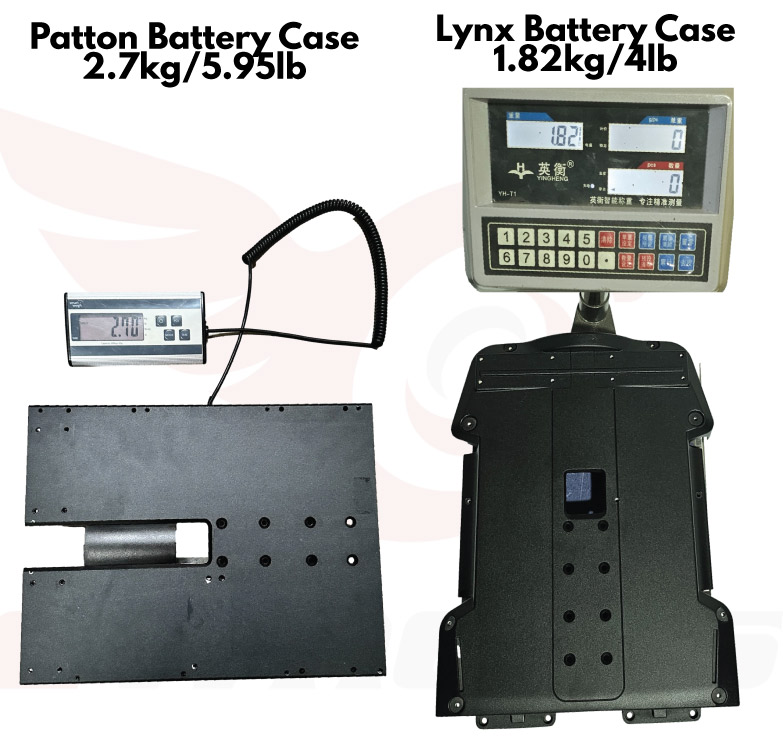
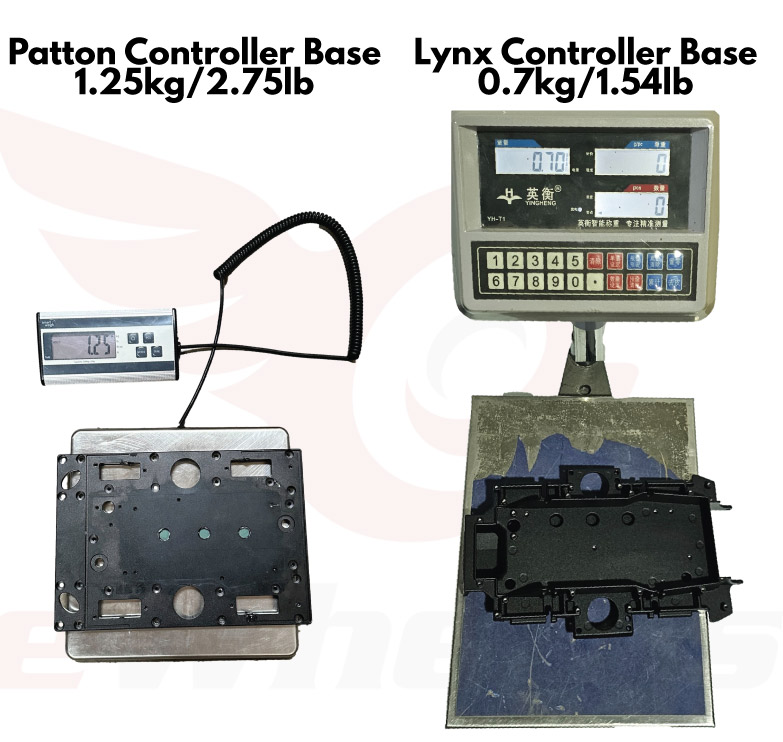
Lynx ‘Progressive’ Shock/Spring
Another innovation on the Lynx is the use of ‘progressive’ springs, where there is a higher density of turns on the lower section of the coil, this results in more resistive force applied when the shock is at a state of high compression, such as on jumps, steps, or trail-riding. From early Customer feedback, the net effect of the new shock is a reduction of ‘bottoming-out’ for heavier riders, even those on the lighter 62/66lb shock. For those who intend to use the machine in a commuting setting, you may want to consider one of the lighter spring options, having a suspension that is too stiff reduces its efficacy.
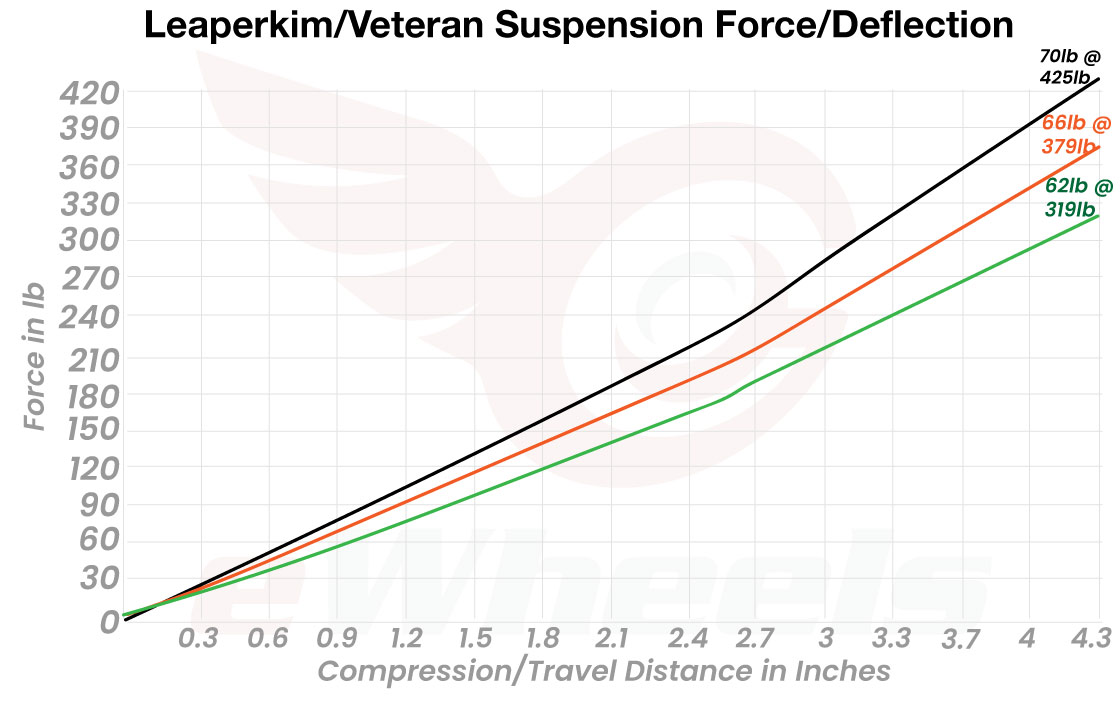
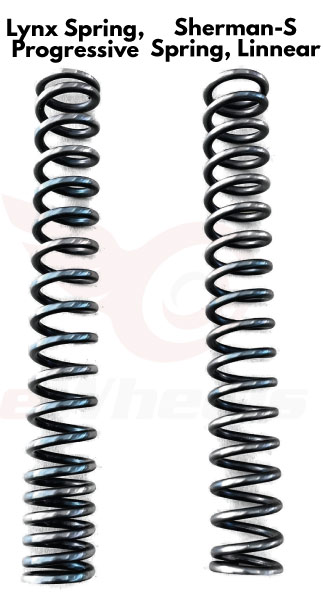
NEW: Upgraded Samsung High-Power 50S Battery Pack
The most valuable component of any Wheel is its battery pack, the beating pulse of the machine. Over the years it has been found, from painful experience, that pairing a high-powered machine with a battery cell that is not designed for high peak-power applications can result in latent/delayed catastrophic thermal runaway events. To try to minimize this risk, we at eWheels, have insisted the use of high-powered battery cells, particularly on smaller 4 parallel packs, such as the MTen4, A2, T4, S18, Hero, S22, & Master—as the number of parallels increase, the load on each cells decreases accordingly. Until recently, there was the trade-off between power & capacity; now, with the advent of the new Samsung 50S cell, one can have both!
- Energy Density: 50S has a 20% increase in energy density over the 40T, providing a corresponding increase in range without any weight/bulk penalty.
- Higher Operating Temperatures: the specifications of the 50S has a vast operating range, from -20 to 80°C/-4 to 176°F vs -20-60°C/-4-140°F with the commonly used 50E/GB cell & as high as 100°C/212°F in Samsung’s test data! This massive margin not only allows the 50S to output up to 3x more power than the 50E, but perhaps more importantly, will greatly improve battery pack safety, there is no conceivable scenario in which these limits will ever be reached, or exceeded.
- Power Output: the maximum sustained power output on the 50s is 45A vs 15A on the 50E. At pack level, this represents a total potential sustained output of 15,120W, on the Lynx. From a Rider’s perspective, the main benefit of having this power on-tap is once the pack(s) have been partially depleted, reducing the risk of cut-outs when power is required.
- Rapid-charging: another benefit of the 50s over the 50E is charging rates, 2.25x higher, 6A vs 2.5A. It should be noted that although the cell supports the higher charging current, there may be other factors that limit maximum charge rate, such as the charge-port, wiring & BMS components. On the Lynx, the maximum rate of charge should not exceed 16A.
- Superior Cycle-life: perhaps the most common misconception of high-power cells is that of reduced cycle-life, but this is fundamentally a misunderstanding of the published datasheet for battery cells. In these publications, Samsung’s data is based on exceedingly high sustained loads of 25A/45A. Other Samsung materials demonstrates that in 10A continuous load scenario, the 50S commands a slight lead over the the 50E for longevity, with >82% capacity retention over 600 cycles.
It should also be noted that these synthetic tests in no way represent the power demand pattern that is experienced when using your machine, where the average load, on flat terrain, will be closer to 2-3A/cell vs the 10A in the test data—there may be periods where this demand is considerably more than the 10A, which is where the high-power cells really come into their element. In addition, the [50S] 600 cycles were charged at the maximum 6A vs a typical 1.5A (per parallel) with the stock charger, which also has an impact on the pack’s longevity.
In summary, the 50S battery cell is objectively superior in every measurable metric, with only a marginal increase in upfront cost. It is expected that machines fitted with these packs will retain their value better than other battery cells.
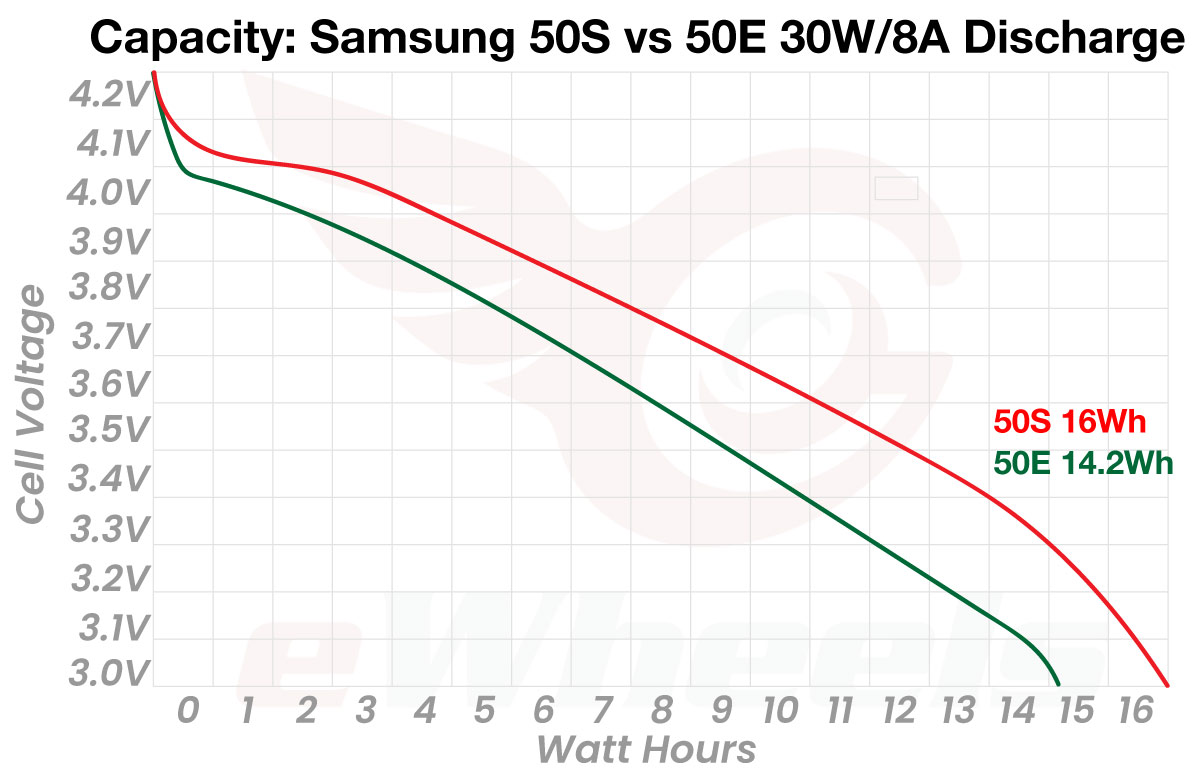
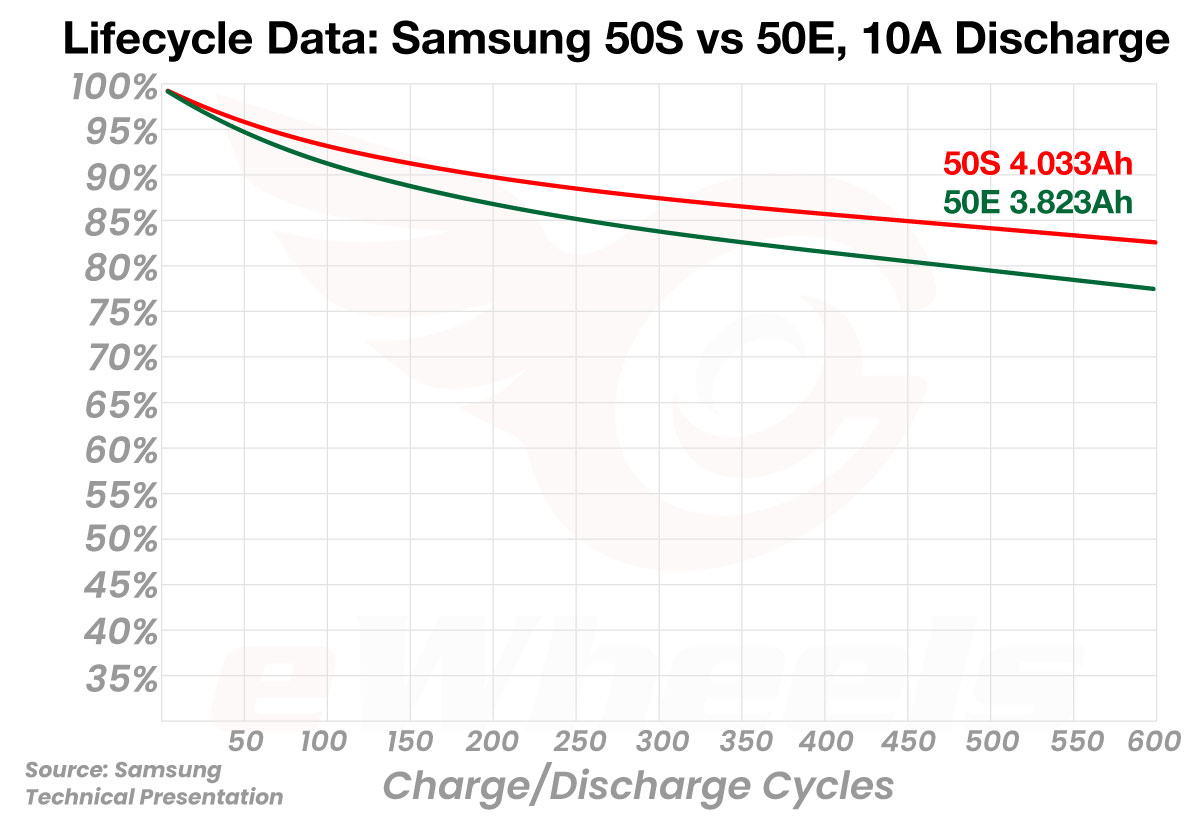
Lynx Bonus Extras
Our Lynx Customers will be receiving two premium bonus accessories as part of the bundle: the Beidou 6pc modular Powerpads, with orange accents, laser-cut velcro & the CNC seat kit—allowing visibility to the display, pivoting from the front handle bar, for easy trolly access. The accessories, when sold individually, are valued at over $250!
Lynx Photo Gallery
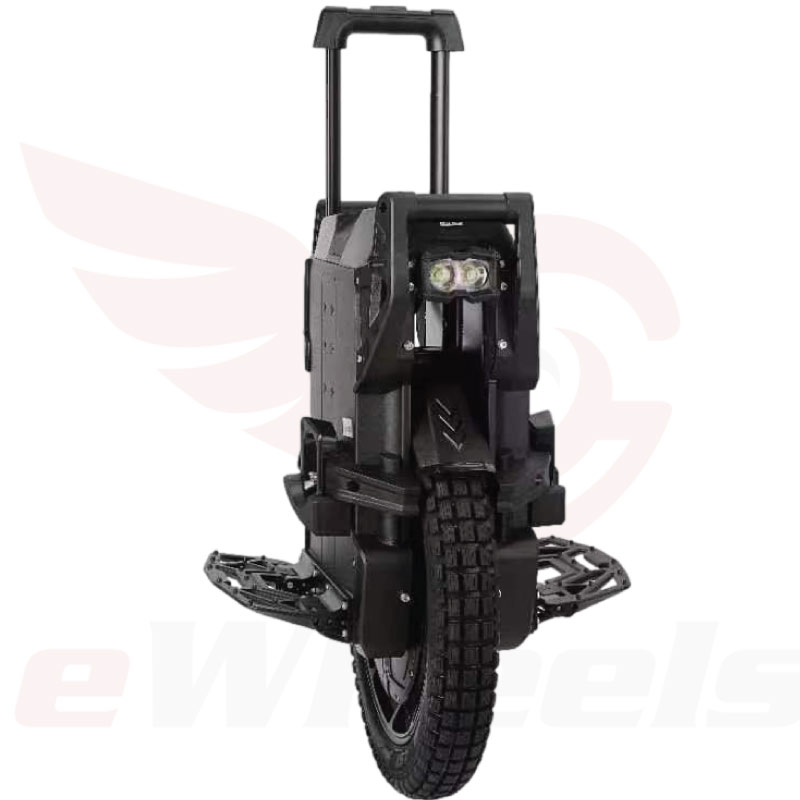
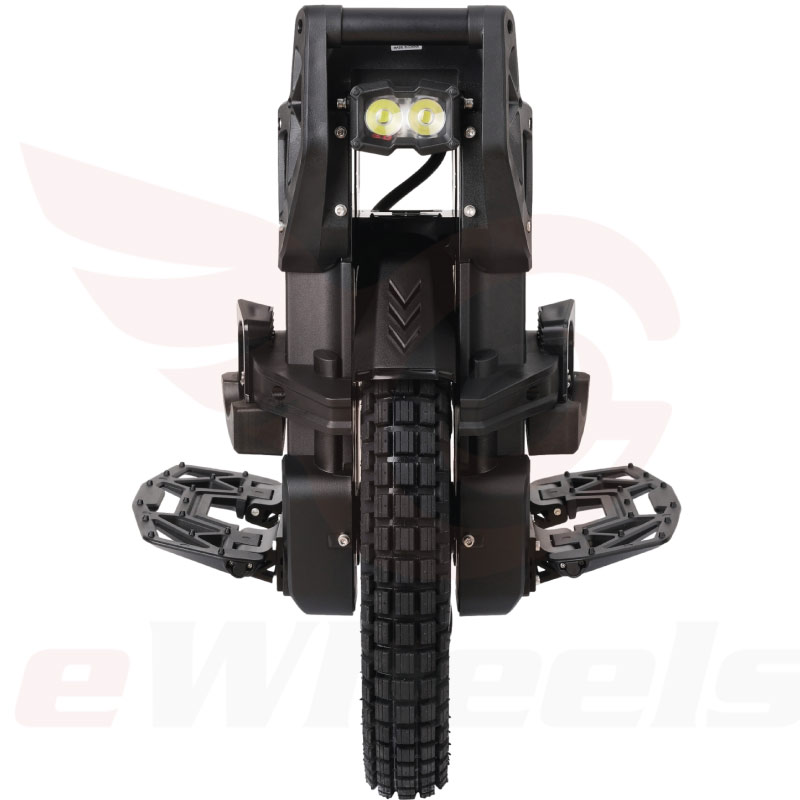
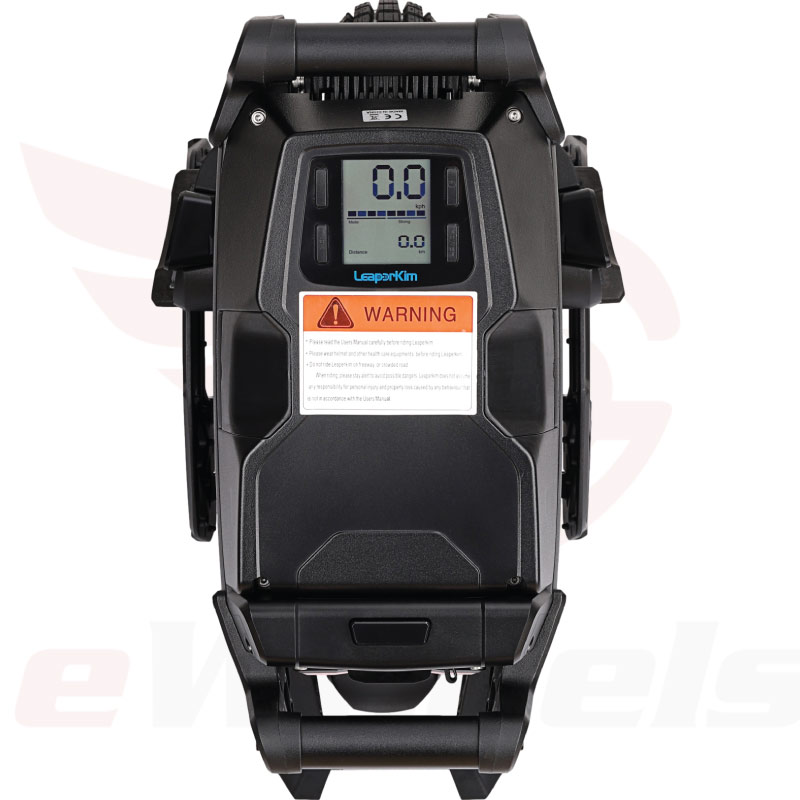
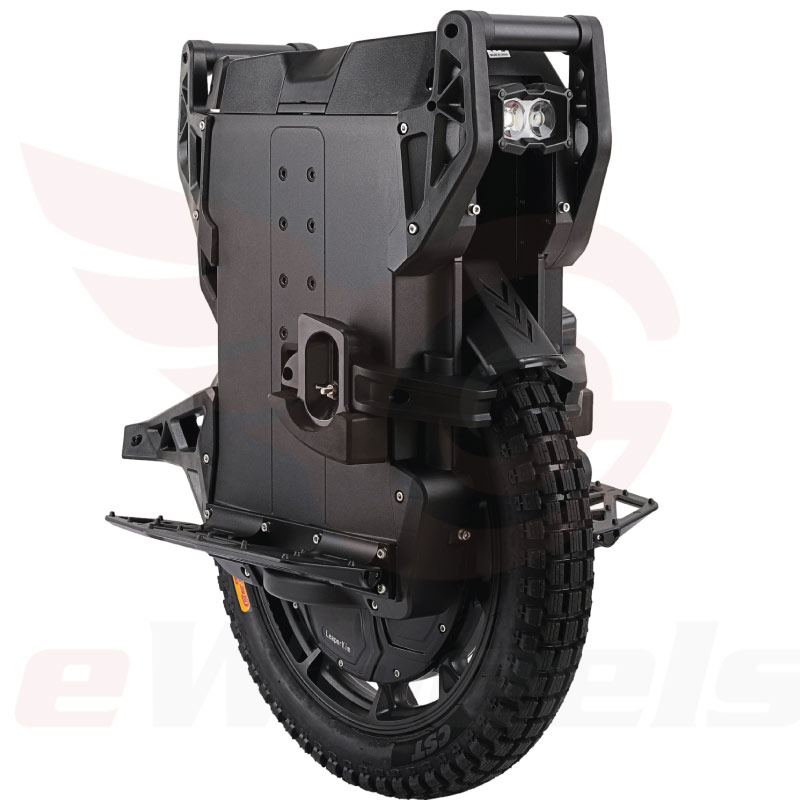
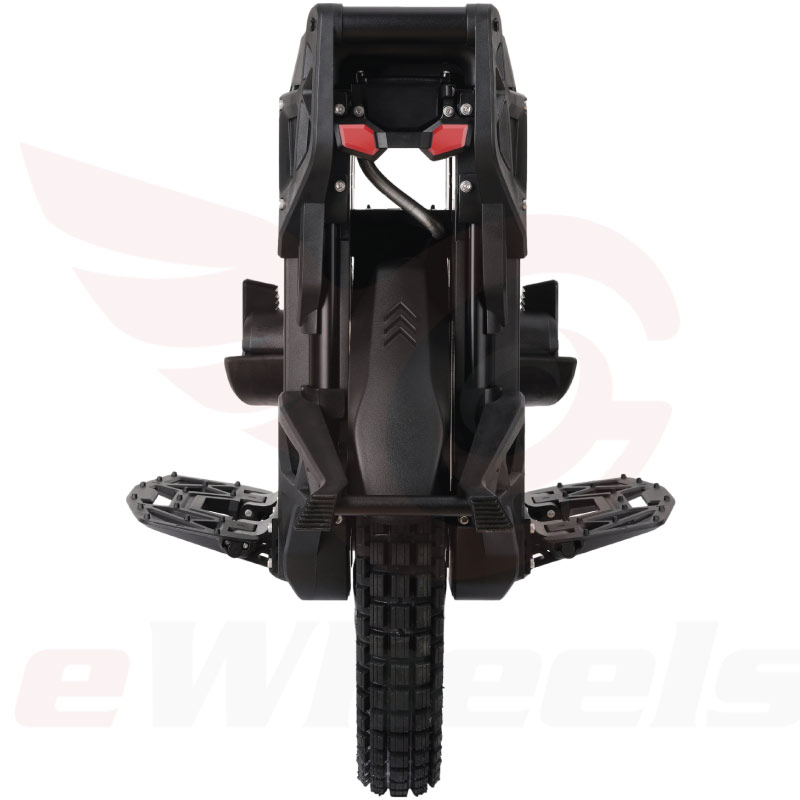
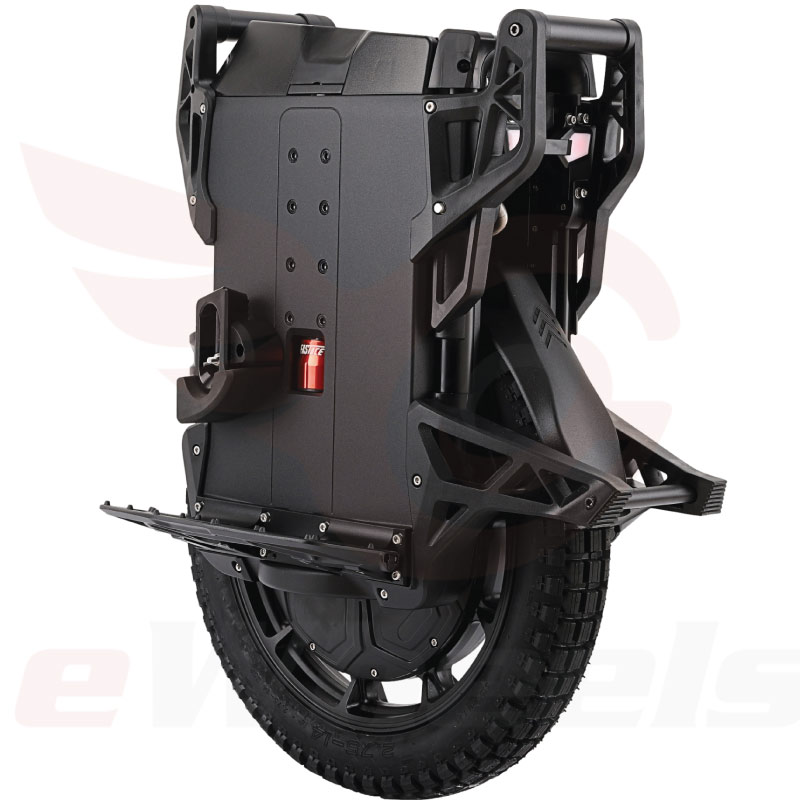
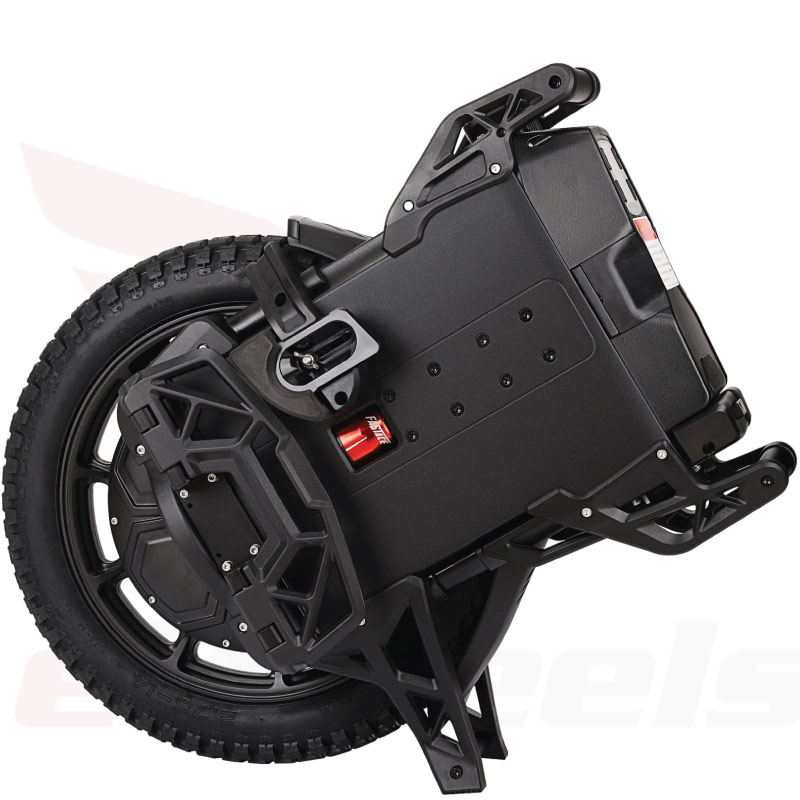
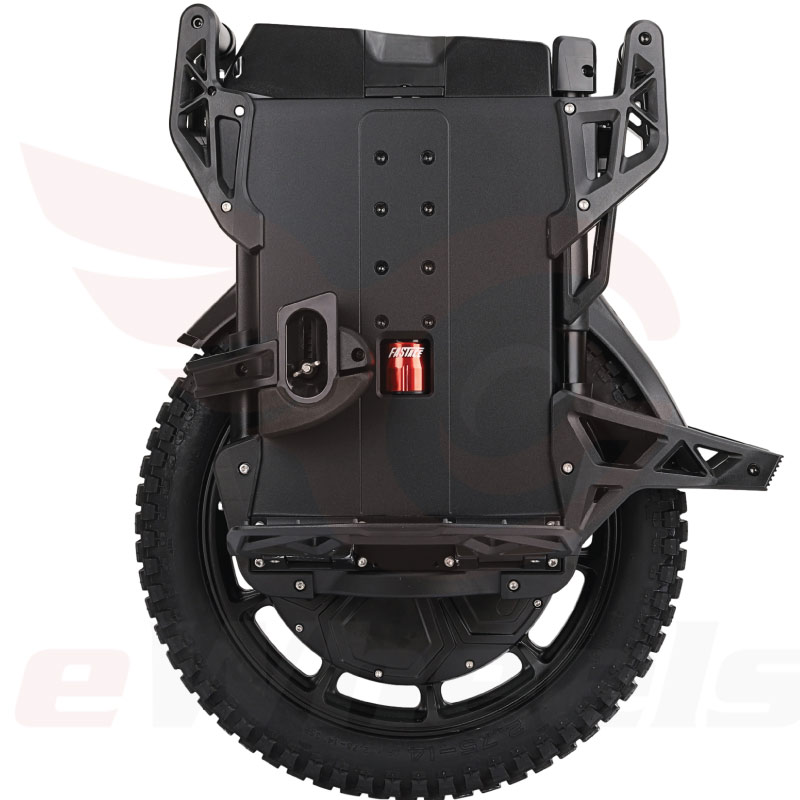
Additional information
| Weight | N/A |
|---|---|
| Dimensions | N/A |
| Suspension | 58lb, 62lb, 66lb, 70lb |
| Tire | Knobby [K262], Street [L841] |

